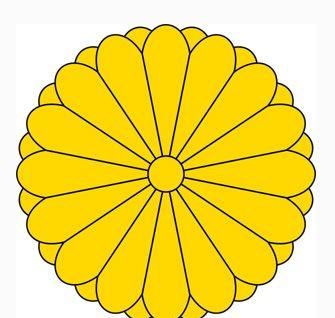Japan's first emperor, Emperor Kammu, was founded in 660 BC, the Chrysanthemum Dynasty. The Chrysanthemum Dynasty has continued to this day, from Emperor Shenmu to Emperor Heisei, a total of 126 generations, and the Chrysanthemum Dynasty is the only dynasty in Japanese history.
We all know that the cherry blossoms in Japan are very beautiful, and Japan is also known as the country of cherry blossoms, so why is the Japanese emperor called the "Chrysanthemum Dynasty"?

According to historical records, Japan at that time greatly worshipped the Tang Dynasty, and the most popular of the Tang Dynasty was the chrysanthemum, and the reigning Emperor Saga at that time wrote a Chinese poem, which mentioned the verse "The Min Shang Season Sequence Chongyang Festival, Chrysanthemum for the Blossom Feast of Thousand Officials".
The Japanese also celebrate the Chongyang Festival, but in Japan it is called the "Kiku Festival", which was introduced to Japan at the beginning of the Heian Period, and after that, every year on the Chongyang Festival, the Japanese nobles would admire the chrysanthemums imported from China, hold banquets, and hold various blessing ceremonies to remove ominousness and wish for longevity. Generations of emperors have inherited this tradition, and over time, chrysanthemums have become the emblem of the Japanese imperial family, and they have designed the "sixteen-petal eight-fold chrysanthemum pattern" based on the yellow autumn chrysanthemum.
In the history of our country, even if the emperor had a brain, he always had to change dynasties once every two or three hundred years, and the Zhou Dynasty, which existed for the longest time, only had a history of eight hundred years. What are the advantages of the Japanese Chrysanthemum Dynasty, and why can it last for more than two thousand years?
Some experts have analyzed that Japan's natural sea-ring terrain has given the Japanese emperor a certain advantage. The terrain surrounded by the sea on all sides is like a natural barrier, when the naval battles of various countries are very backward, so most countries will not choose to attack other countries with their own weaknesses. Legend has it that Mongolia sent troops to attack Japan twice, but each time it was blown back by the typhoon before Japan's border was even close.
Resisting foreign invasions, Japan's civil unrest was also very frequent. Emperor Shenmu ruled Japan for about 1500 years, and a series of wars broke out in Japan, such as the Genpei War and the Kamakura shogunate, and the power of the emperor was almost vacated by various shoguns, becoming a puppet emperor for a thousand years. Why did the general just silently empty the emperor's power, but did not kill him and ascend to the throne himself?
In ancient Japan, people believed in theology and believed that the emperor was their god. The only religion recognized in Japan is Shintoism, represented by the Emperor of Japan. That is to say, in the minds of the Japanese, the emperor is not an ordinary emperor, but an emperor who comes from heaven to shelter the people of one side. Such an emperor who was given unlimited divine power, no general dared to kill him easily. It is said that during World War II, Japan was defeated, and Emperor Showa announced his surrender to the US military, and the US government did not dare to execute the emperor for fear of crazy retaliation from the Japanese people.
This is the secret of Japan's only dynasty, the Chrysanthemum Dynasty, which lasted for two thousand years.